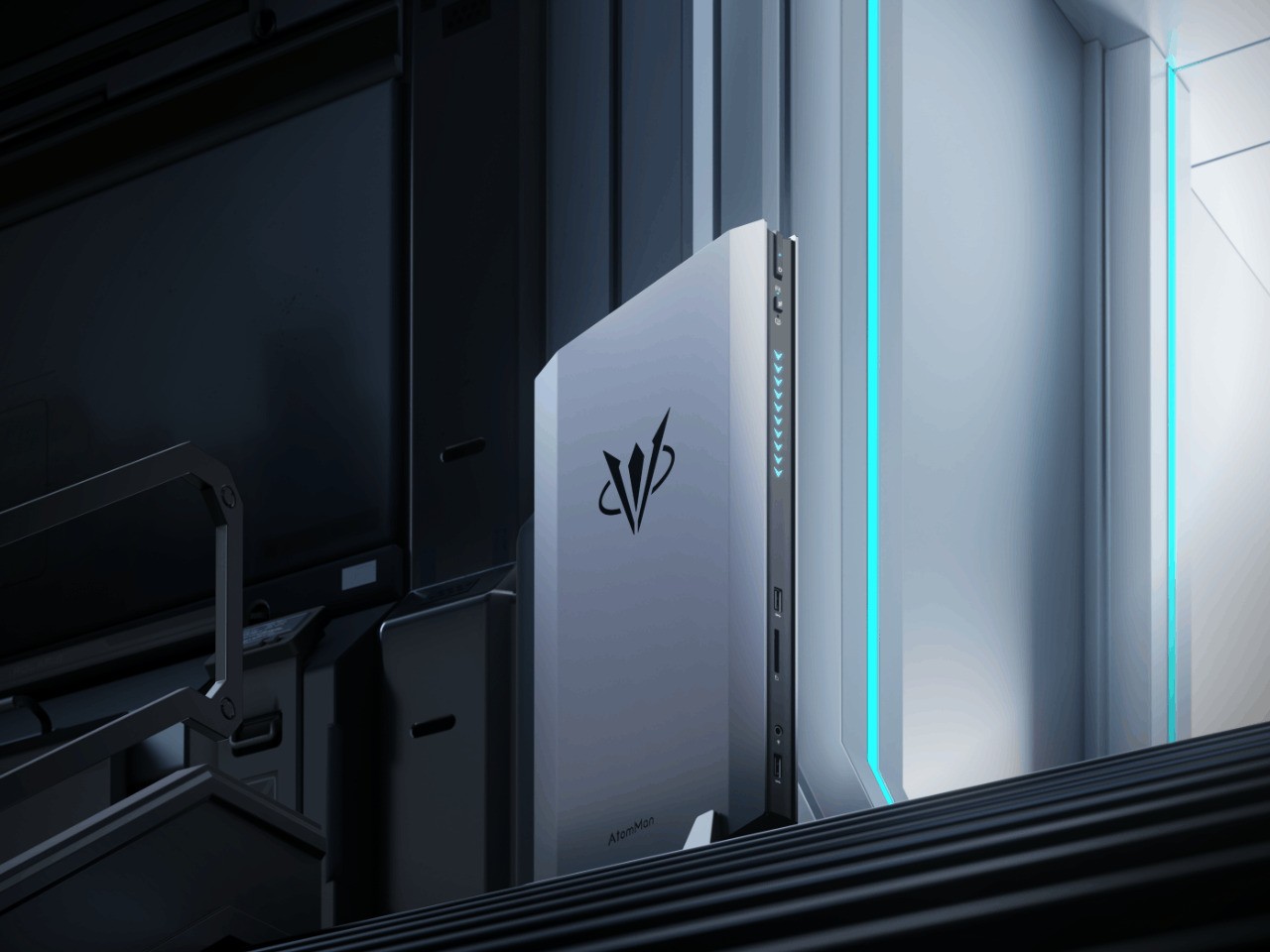
Gaming PCs have a notoriety for being big, hulking, and kaleidoscopic machines, though that seems to be only true for desktops these days. Gaming laptops are becoming slimmer, gaming mini PCs have started popping up, and let’s not forget the growing number of handheld PCs designed specifically for gaming purposes. Suffice it to say, the design of gaming PCs is undergoing a shift, transforming from cyberpunk monstrosities to sleek art objects. Of course, design tastes differ, and even the current PlayStation 5’s smooth curves and trophy-like appearance didn’t sit well with everyone. This new MINISFORUM “mini” gaming desktop PC follows in those footsteps and looks like something that is a cross between a very straight and tall PS5 and a gaming laptop that had its screen removed.
Designer: MINISFORUM
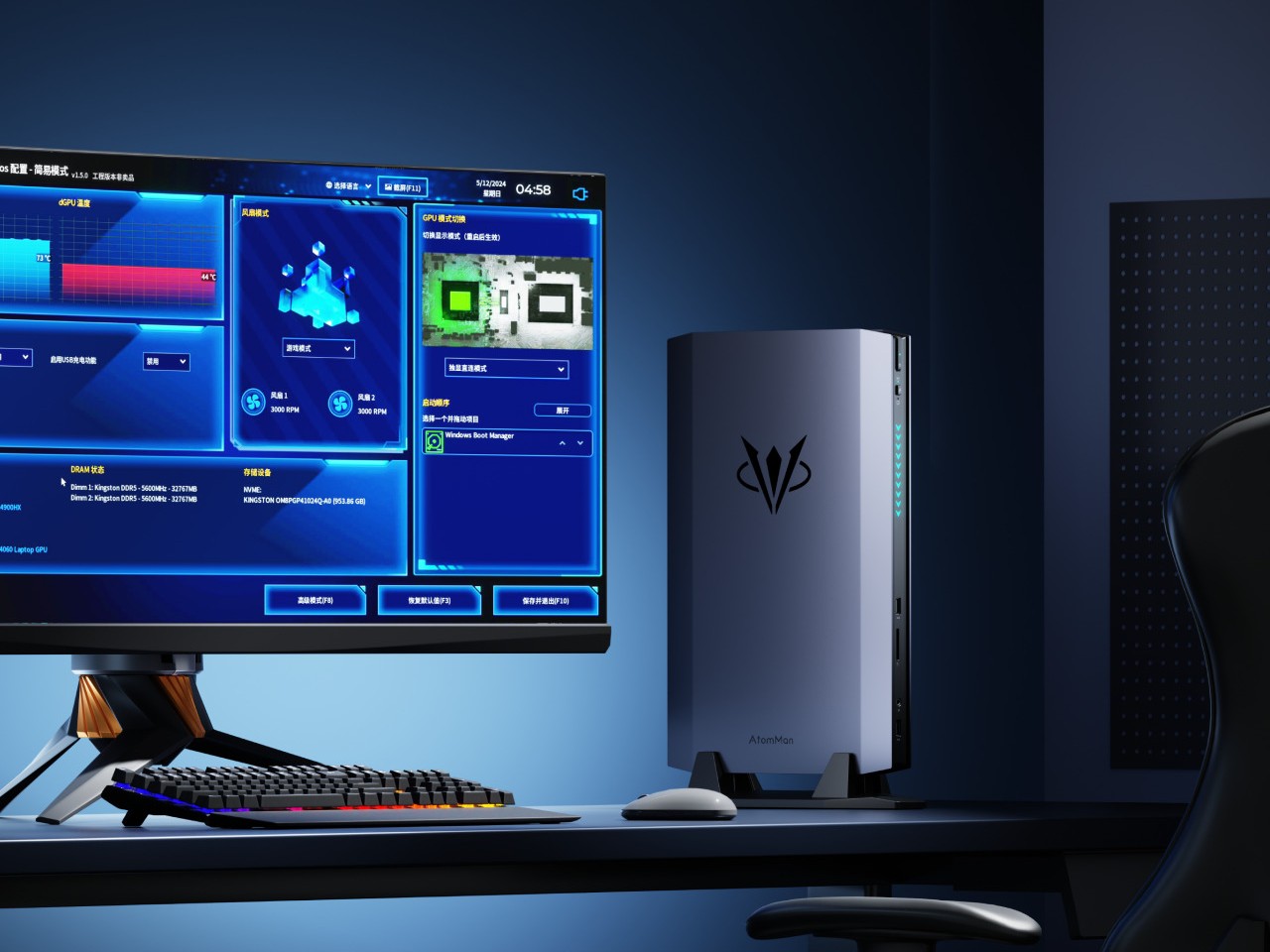
It’s hard to call the AtomMan G7 Ti a “mini PC” the way it stands over 15 inches tall, but it won’t take up too much desk space compared to a regular tower thanks to its super-slim 1.3-inch profile. The gaming computer is what you’d get if you took a gaming laptop and stood it on its side, which is practically what this gaming rig really is, except that it needs to be plugged into a monitor and power source, cementing not only its “feet” but also its image as a desktop computer.
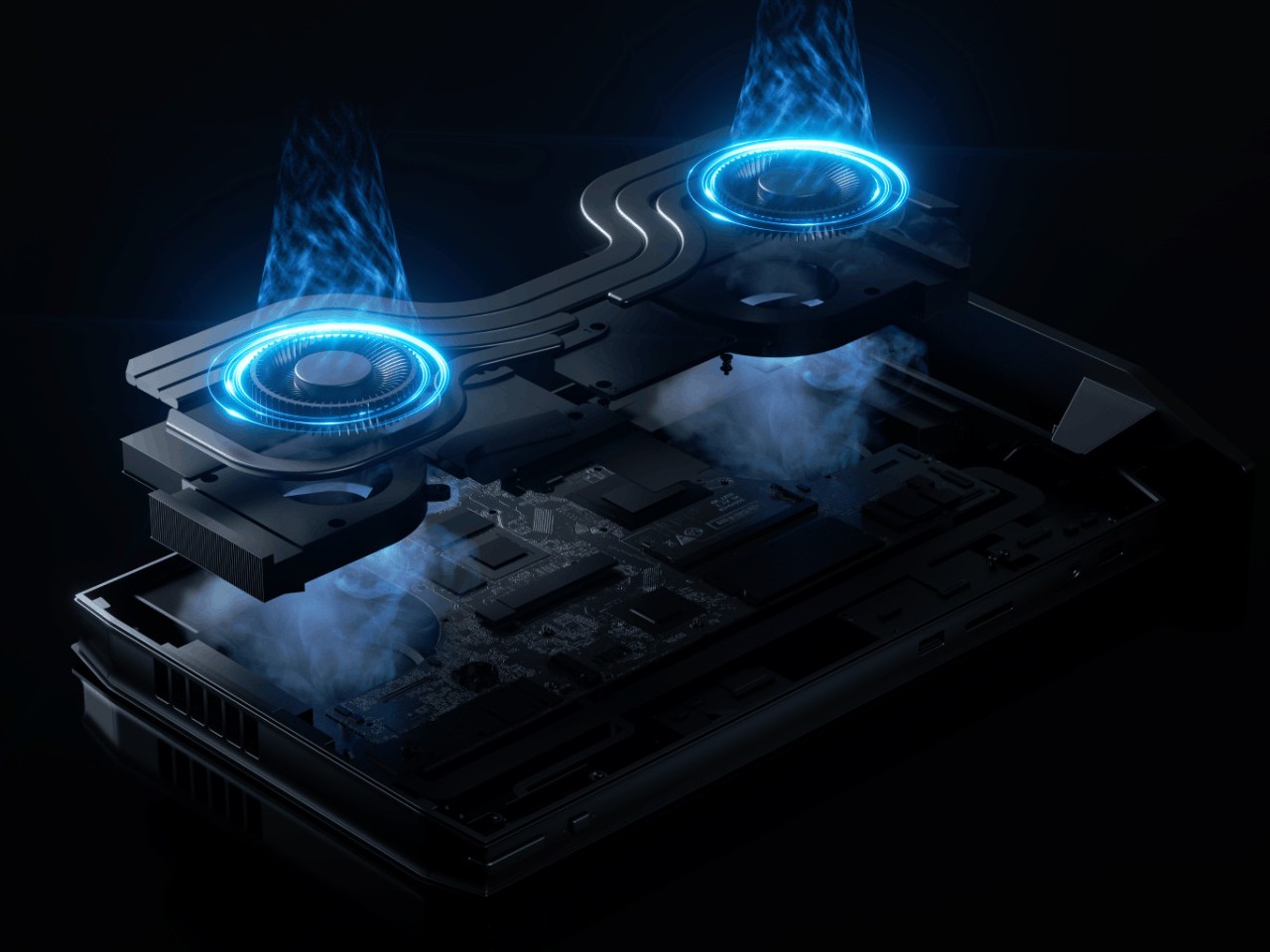
Inside, it’s powered by a Core i9 14900HX, not the AI-toting “Ultra” variant, that’s paired with an NVIDIA RTX 4070 of the mobile laptop kind. If that doesn’t scream “laptop computer,” then may the two thin fans situated on only one side of the chassis will. There might be some arguments that a gaming desktop will need more cooling than that, but gaming laptops have definitely survived with just as much. This demonstrates the sort of cognitive confusion on whether this computer is really a desktop or a laptop in disguise.
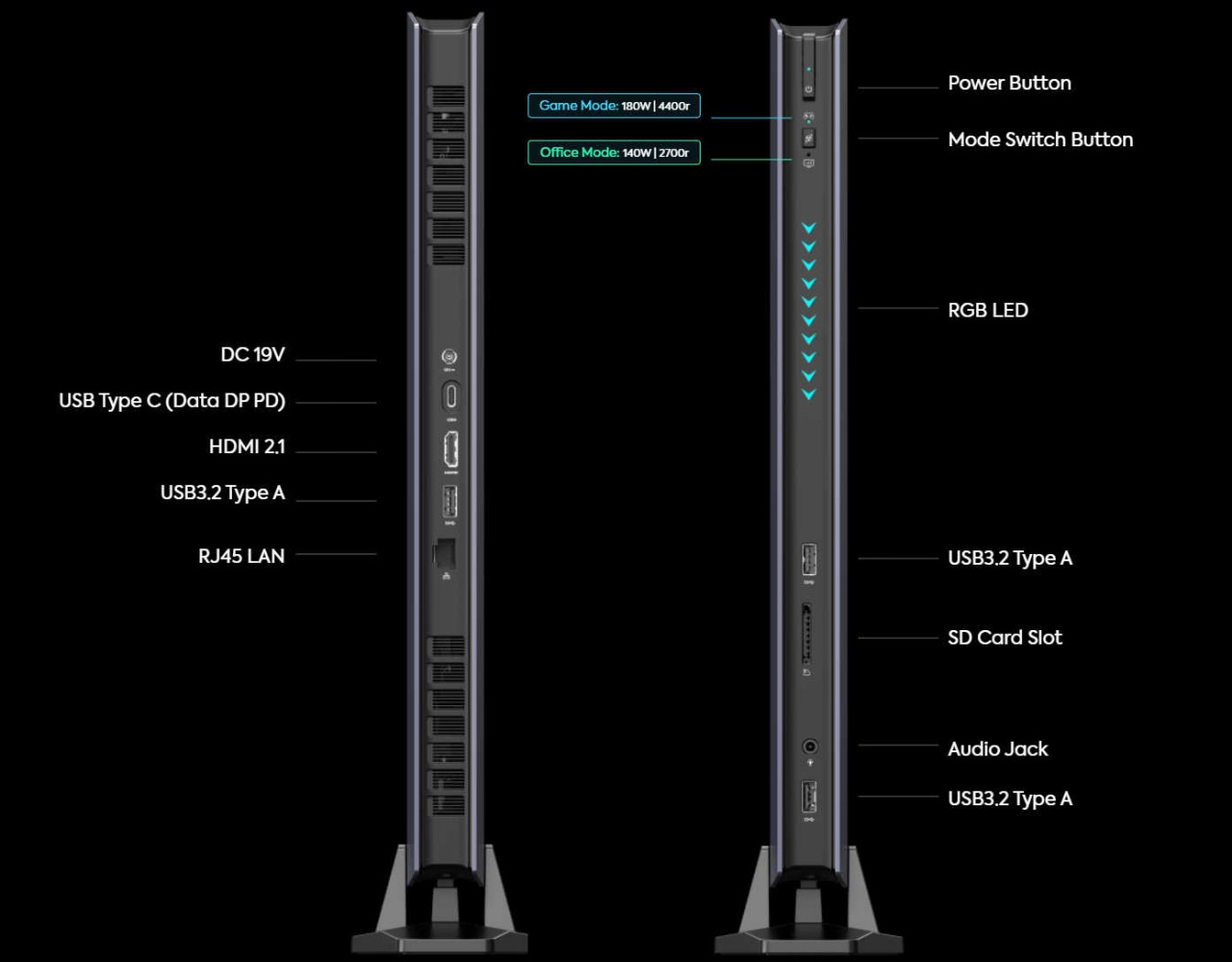
It definitely offers many things you’d only find in desktop computers, like support for up to 96GB of RAM and a plethora of ports for connecting almost anything imaginable. The latter is important since you can’t really use it on its own and will need to connect peripherals like, well, a monitor. On the other hand, some gamers might be on the fence about its actual performance, considering the constrained hardware and cooling.

The MINISFORUM AtomMan G7 Ti is definitely going to be an acquired taste, especially with a design that looks more like a classy desktop than a gaming rig. It does have some RGB lighting, but only on the front and limited to a string of LED “arrows.” Pricing and availability details remain undisclosed, but it’s definitely an interesting take on your typical gaming desktop computer, one that prioritizes appearances and space efficiency over raw power.
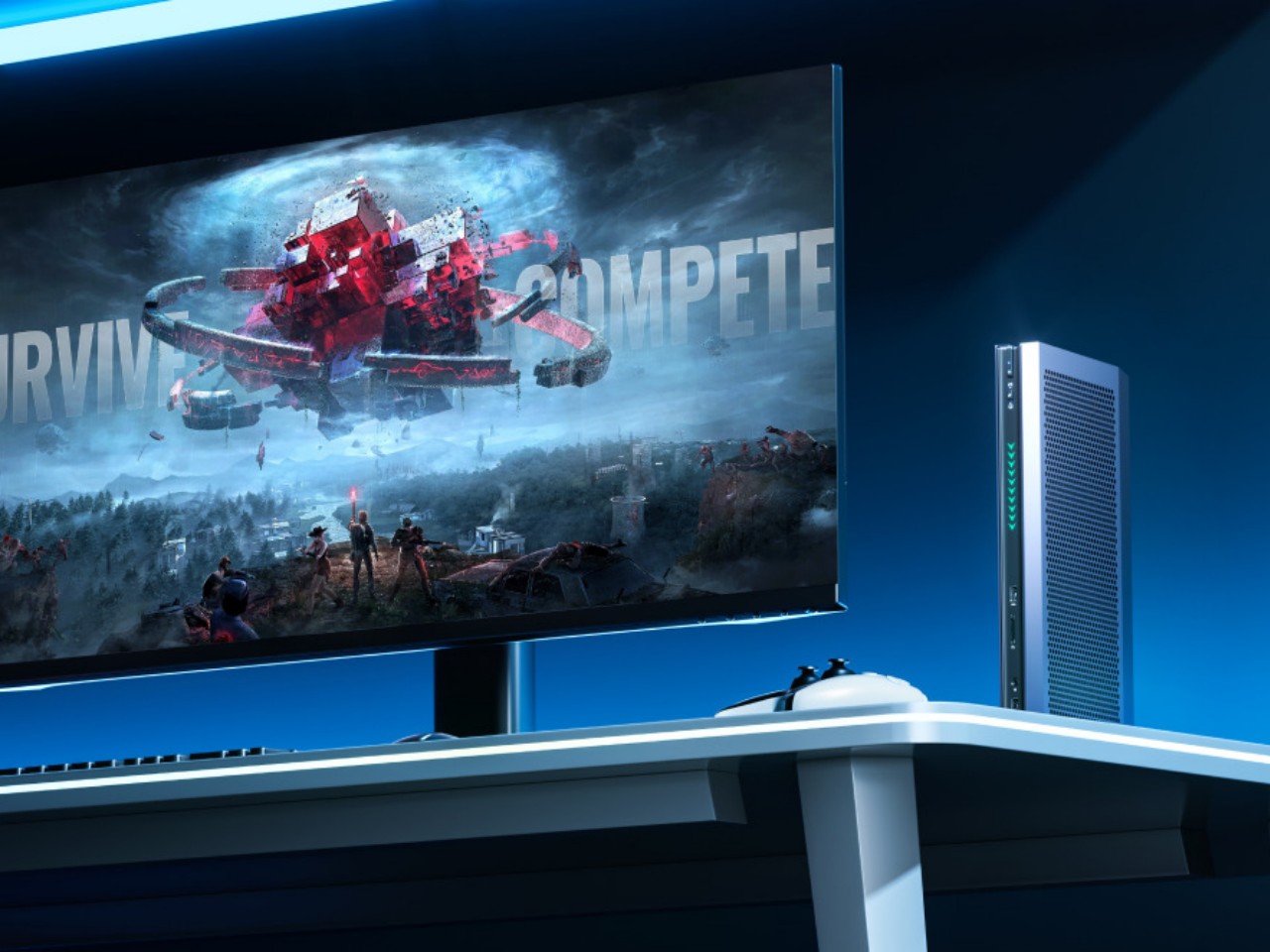
The post MINISFORUM AtomMan G7 Ti is a gaming laptop without a screen standing like a PS5 first appeared on Yanko Design.